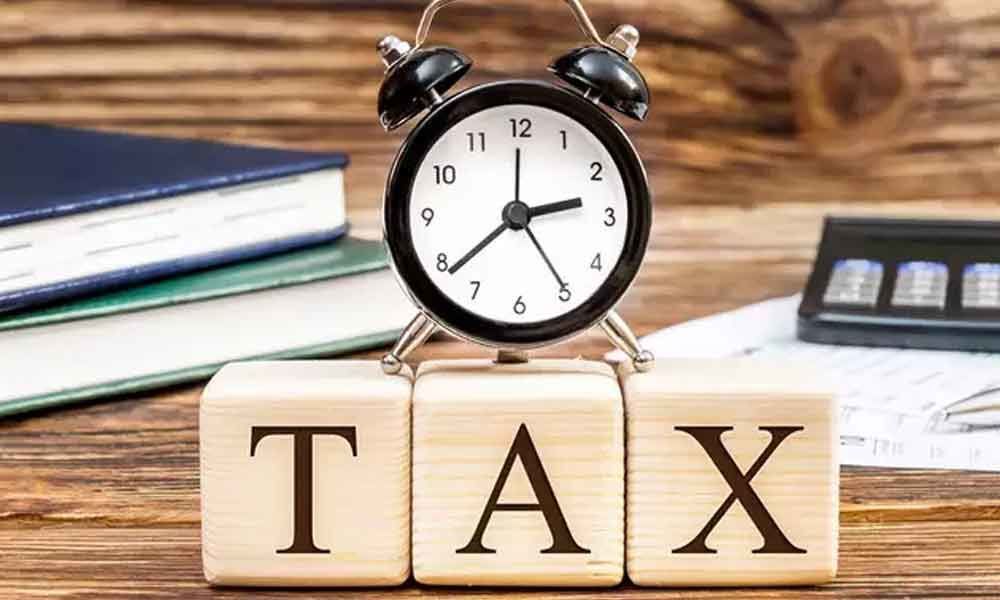Live
- NHRC takes cognizance of Lagacharla incident
- Telangana Cabinet expansion likely after Maha results
- Centre developed CFSL with int’l standards: Bandi Sanjay
- SVU embarks on promoting drone, space technologies
- HMWSSB MD inspects Mehdipatnam, Langar Houz
- Aging vehicles aggravate Hyderabad’s air pollution woes
- Paddy procurement made easy in AP
- Aim to design Tirumala as a planned model town: TTD EO
- Partymen, aam aadmi air grievances before Dy CM
- NTPC Green to set up projects worth 1.87 lakh cr in AP
Just In

It is again that time of the year when we ready ourselves for filing the tax returns of the last financial year.
It is again that time of the year when we ready ourselves for filing the tax returns of the last financial year. Of course, for most of the salaried employees its almost a straightforward calculation arising out of their Form -16, the employer's book of accounts for that individual.
But what is mostly ignored and sometimes not considered is the presence of capital gains arising out of various transactions that could be of physical or financial assets. This article limits the consideration of capital gains arising out of physical assets and the various exemptions available to save tax.
Firstly, the consideration of short and long-term for calculating capital gains varies across asset classes.
And for equity shares, listed securities, zero coupon bonds and equity linked mutual fund units when retained for more than 12 months is considered as long term capital assets and for land or buildings, when held for more than 24 months is considered as long term capital assets while any gains arising out of sale of these assets is treated as long-term capital gains (LTCG).
For other assets beyond the mentioned above, the holding period for long term assets is 36 months.
Under section 54 of the Income Tax (IT) Act, provides an exemption for Individuals and/or Hindu Undivided Family (HUF) on LTCG arising from transfer of an asset (building or lands) that could be a residential house, self-occupied or not, provided tax assessee has purchased within one year before or two years after the sale date or has constructed a residential house/flat within three years after that date. If only a part of the capital gain is used, the exemption would be pro-rata.
The recent amendments to Section 24 has given flexibility of construction of the house to five years which was earlier only three years for the exemption on interest payable on housing loan.
However, there is no time limit for commencement of construction though for completion the limit is before expiry of three years from the transfer date of the original asset. So, all the costs incurred for the construction can be claimed as acquisition cost irrespective of when its constructed.
Moreover, exemption is available on purchase of new property within one year before the sale of the old house. But for the construction, the exemption is not available if the construction is completed even by a day before the sale of the old house.
In addition, the assessee need not apply the amount from the sale proceeds for purchasing another residential house. For instance, one could opt a loan to purchase or construct and use the sale proceeds any which way.
Nevertheless, there are some reservations under Section 54F. It requires reinvestment of the net consideration sale value (less expenses) whereas Sec 54 is content with reinvestment of only the capital gains.
Its applicable if the assessee is not an owner of more than one residential house, other than the new asset, on the date when he earns the LTCG. But Sec 54 has no such stipulation.
Its required not to sell the newly acquired property within three years from the purchase or construction date in the case of Sec 54.
If this condition is not satisfied, the cost of the new asset is to be reduced by the amount of LTCG exempted from tax on the original asset and the difference between the sale price and such reduced cost will be chargeable as Short Term Capital Gains (STCG) of the year in which new asset is sold.
Also, mere non-residential use would not render a property ineligible for the benefit of Sec 54F as long as its a residential property. To avail these benefits, the house need not be purchased in the name of the assessee only and could still apply when purchased in the name of his minor child or wife.
For the calculation of capital gains, assets transferred under gift or a will or an irrevocable trust is not treated as transfer. Computing long term capital gains (LTCG) for gains arising out of the subsequent sale by the donee or legatee, the cost of the property is the cost incurred by the donor when he originally acquired it.
If this original holder has also acquired the property by the way of gift or inheritance, then it will be the cost of the very first holder who purchased or constructed the property. If this date is prior to April 1, 2001 the Fair Market Value (FMV) as on that April 1, 2001 can be optionally taken as the cost of acquisition.
(The author is co-founder of "Wealocity", a wealth management firm and could be reached at [email protected])

© 2024 Hyderabad Media House Limited/The Hans India. All rights reserved. Powered by hocalwire.com







